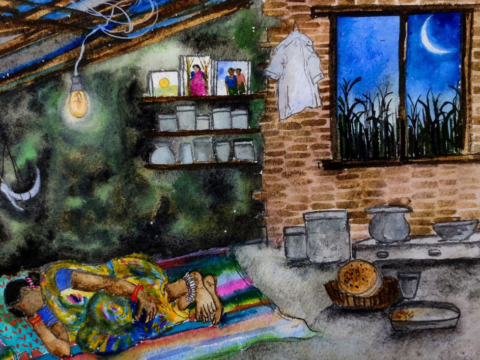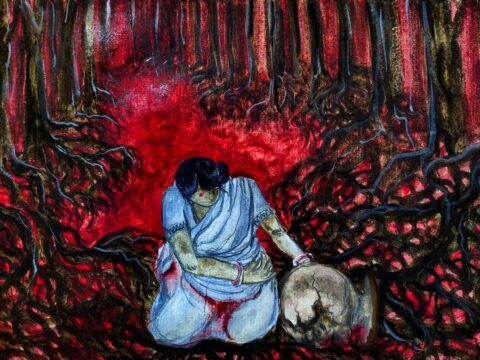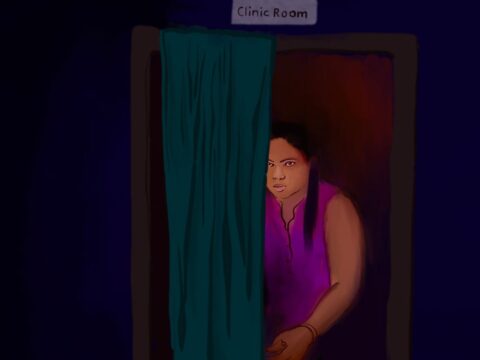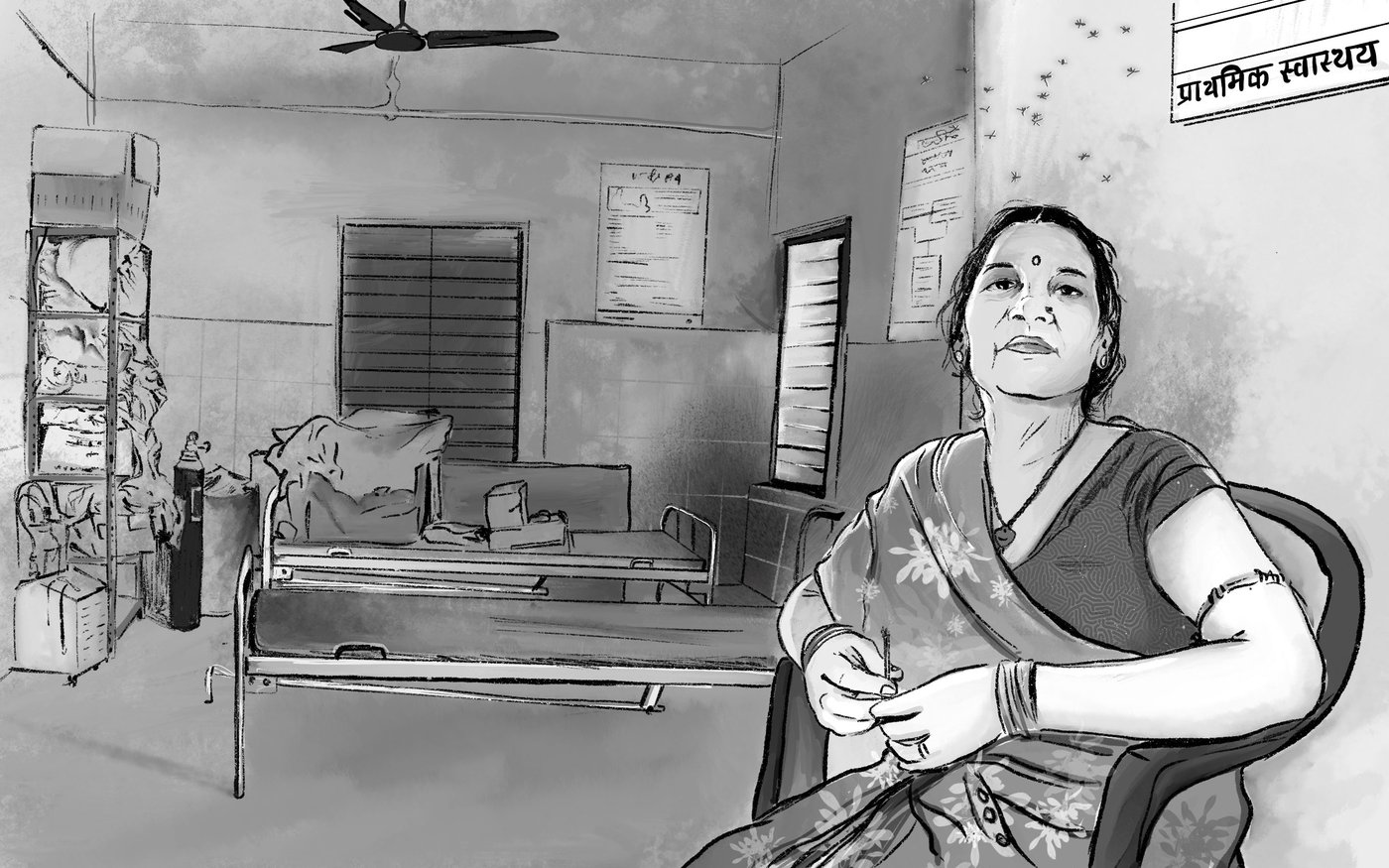
Shortage of space and lack of facilities compel health workers in a primary health centre in Bihar’s Darbhanga district to sleep in the office, on ward beds, and sometimes even on the floor.
Minutes after the primary health centre in Sadar town opened on Monday morning, Sunita Dutta arrived there with her husband. But the couple quickly left the PHC after an auxiliary nurse midwife (ANM) took Sunita to the delivery ward. “ Isme kaise hoga bachcha, bahut gandgi hai idhar [How can I deliver in this place, it’s very dirty here],” said Sunita, as she boarded the same rickshaw they got there in.
“It’s her due date today – so now we have to go to a private hospital,” said her husband, Amar Dutta, as their rickshaw departed. Sunita had delivered a child, her third, at this PHC. But this time, for her fourth, she has opted to go elsewhere.
At 11 in the morning, the labour room of the Sadar PHC awaits the arrival of the sweeper to wipe clean the bloodstained floor – still messy from a delivery of the previous day.
“I am waiting for my husband to come pick me up. My duty time is over for today. I had a night shift and there were no patients, but I could barely sleep due to the mosquitoes,” says 43-year-old Pushpa Devi (name changed). Pushpa works as an ANM at the PHC in Sadar town in Bihar’s Darbhanga district. She talks to us in the office area, seated on a chair for the ANM on duty. Behind the chair is a table with some papers strewn on it, and a wooden bed. The same bed on which Pushpa spent her troubled night.
The pale, once cream-coloured mosquito net hung above the bed is riddled with holes big enough to offer easy entry to the pests. The bedding beneath has been folded and kept aside with the pillow – to be used by the ANM on the next night shift.
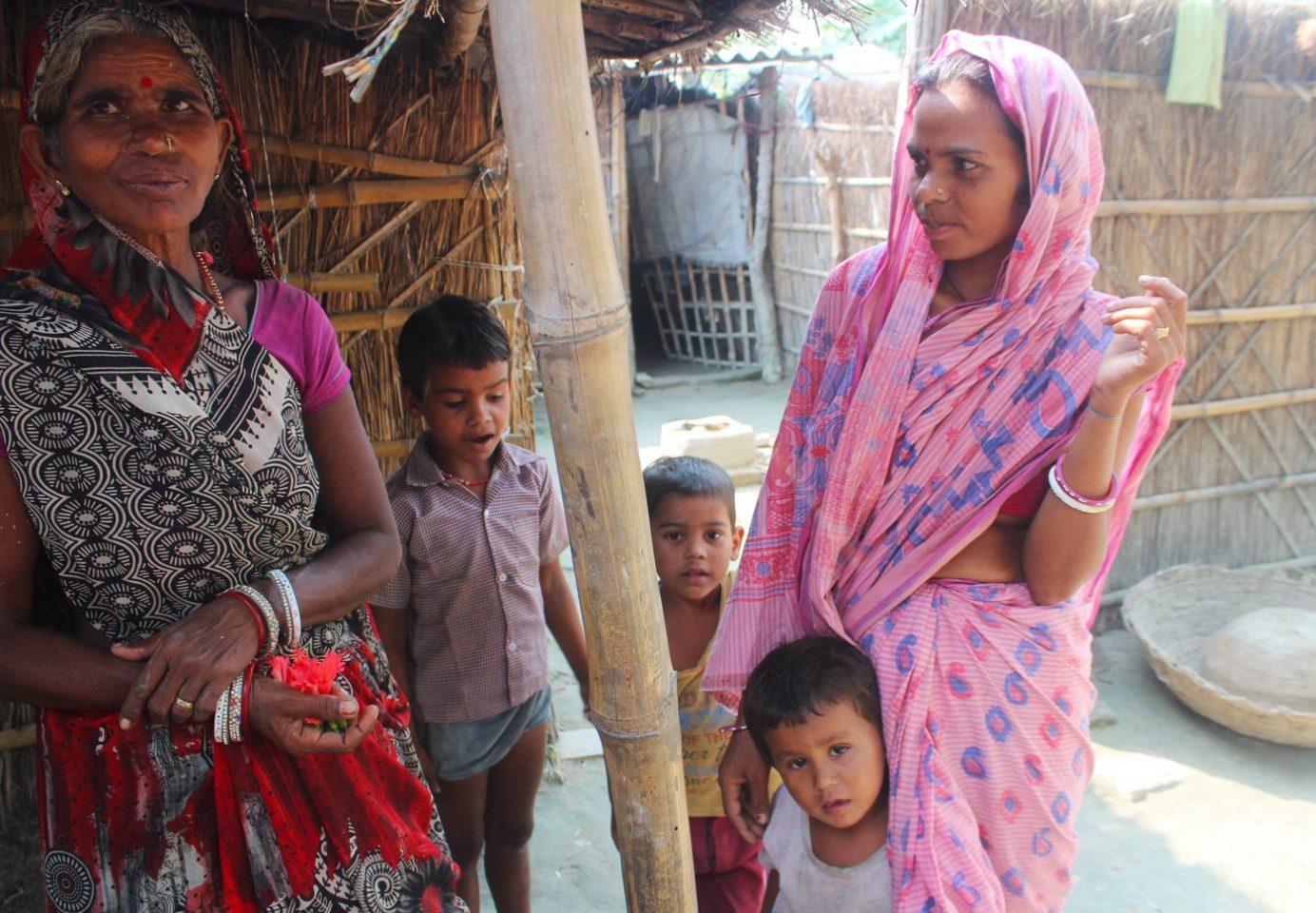
Sunita Dutta (in the pink saree) delivered her third child at the Sadar PHC, but opted for a private hospital to deliver her fourth child
“Our office and sleeping area are the same. This is how it is,” says Pushpa as she chases away a group of mosquitoes congregating atop a notebook. Pushpa is married to Kishan Kumar, 47, a small-shop owner in Darbhanga town where they live, just five kilometres away. Their only child, 14-year-old Amrish Kumar, attends Class 8 in a private school there.
Pushpa says that on average, 10 to 15 deliveries take place in the Sadar PHC every month. It used to be almost twice that number, she says, before the Covid-19 outbreak. There are two delivery tables in the labour room of the PHC and a total of six beds – one of them broken – in its post-natal care (PNC) ward. Of these beds, says Pushpa, “four are used by patients and two by the Mamtas.” There is no other place for the Mamtas to sleep.
The ‘Mamtas’ are contract health workers in the maternity wards of government hospitals and health centres in Bihar. The category is specific to this state. They earn around Rs. 5,000 a month – sometimes less – plus Rs. 300 ‘incentive’ bonus for each delivery they oversee or assist with. But it is hard to find anyone making over Rs. 6,000 a month regularly from salary and ‘incentives.’ There are two of them in this PHC and over 4,000 across the state.
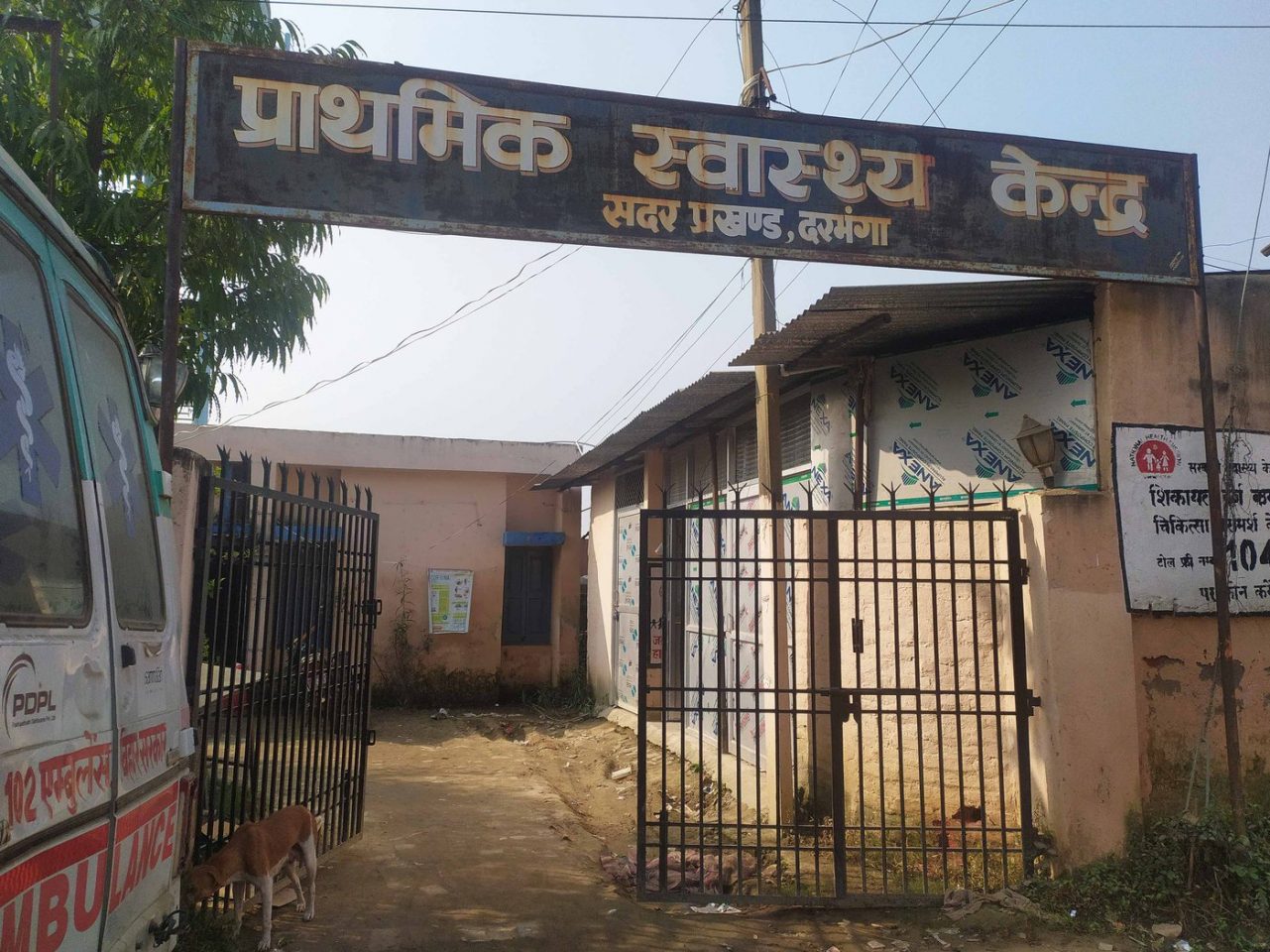
Sadar primary health centre
Meanwhile, Pushpa’s wait is over as Baby Devi (name changed), the Mamta worker she has been waiting for, arrives. “Thank god she is here before I leave. Today she has the day shift. The other ANM should also come in soon now,” she adds, and presses a button on a rather old cell – she does not own a smartphone – to check the time. There are four other ANMs who work in this PHC’s labour room – and another 33 associated with it, who are ‘outreached’ to its health sub-centres across several villages in the district. The PHC also has six doctors working – and one post of gynaecologist that lies vacant. There is no medical technician – that work is outsourced. There are two sweepers.
ANMs enter service in Bihar at a starting salary of Rs. 11,500. Pushpa, having been around for over two decades, earns about three times as much.
The 52-year-old Mamta, Baby Devi, arrives at the PHC with a datun (a thin twig of neem used as a toothbrush, about 20 centimetres long) in her hand. “ Arey didi aaj bilkul bhaagte-bhaagte aaye hain [Sister, I have come running today],” she says to Pushpa.
So what’s different about today? Her 12-year-old granddaughter, Archana (name changed), is accompanying her to work. Wearing a pink-yellow frock, with flawless brown skin and golden-brown hair tied in a ponytail, Archana walks behind her grandmother, clutching a plastic bag that presumably holds their lunch.

Mamta workers assist with everything in the maternity ward, from delivery and post-natal care to cleaning the room
Mamta workers are assigned to take care of mothers and infants. However, says Baby Devi, she assists in everything from delivery to post-natal care and with everything happening in the maternity ward. “My duty is to see the mother and child post-delivery, but I end up taking care of the delivery along with the ASHA didi , and then cleaning the bed as well as the labour room when the sweeper is on leave,” says Baby as she dusts the table.
She tells us that she used to earn more when she was the only Mamta in the PHC. “I used to get 5,000-6,000 rupees a month but ever since they’ve appointed another Mamta, I earn the incentive amount on only 50 per cent of the deliveries, at 300 rupees for each. With deliveries at the PHC falling from the onset of the pandemic, the best each can get is Rs. 3,000 in a month, perhaps less. That Rs. 300 ‘incentive’ has been around only for five years. Till 2016, it was just Rs. 100 a delivery.
Most days, others visiting the PHC on work are the ASHAs, who accompany pregnant women from villages under their care for delivery here. Sunita and her husband were not accompanied by one, and none came in while this reporter was there, perhaps reflecting the fall in PHC patients once the Covid-19 pandemic began. However, those patients who do come in for delivery often have an ASHA with them.
ASHA stands for ‘accredited social health activist’ – and refers to women who connect their rural community to the public healthcare system.
There are close to 90,000 ASHAs in Bihar, the second-largest contingent of the over one million working across the country. They are termed ‘volunteers’ by governments, which use that status to justify paying them a pittance as an honorarium. In Bihar, they receive Rs. 1,500 a month – and additional sums from other ‘incentives’ per task completed, including those relating to institutional deliveries, immunisation, home visits, family planning and more. Most of them would make, on average, Rs. 5,000-6,000 a month from all of these tasks. There are 260 of them associated with Sadar PHC and its many sub-centres.

A broken bed in the post-natal care ward is used for storing junk
Baby asks her granddaughter to take out the food from the plastic bag, and continues speaking. “We always feel there’s a shortage of space, beds and facilities here. But if we ask for better facilities, we are threatened with transfer. During the monsoon, waterlogging becomes the biggest challenge. Many times, patients coming for delivery in that season return home after seeing the situation,” she adds. “They head to private hospitals after that.”
“Come with me, I will show you our PNC ward,” she says, dragging this reporter by the arm with her. “See, this is the only room we have for everything post-delivery. That’s all, for us as well as the patients.” Apart from the six beds in this ward, there is the one that ANMs like Pushpa occupy in the office area and another just outside the maternity ward. “The Mamtas get to use two of these beds at the best of times. When all the beds are occupied by patients during the night shift, we have to join benches to sleep on them. There have been days when we, even our ANMs, have had to sleep on the floor.”
Baby looks around to see if any senior can overhear our conversation, and then continues, “We are given no arrangement for warm water. The didi [ANMs] have been asking for that for a long time now, but in vain. Only our next-door chaiwali helps us. When you step outside, you will find a little chai -shop on the right side of the PHC gate, run by a woman and her daughter. She brings us warm water when we need it, in a steel pathila [vessel]. We pay her something every time she brings it. Usually, 10 rupees.”
How does she cope with the paltry sum she earns? “What do you think?” asks Baby. “Do you feel 3,000 rupees will suffice for a family of four? I’m the only earning member. My son, daughter in-law and this girl [granddaughter] live with me. So the patients give us some amount. ANMs, ASHAs … everyone takes it. We also make some money this way. Sometimes 100 rupees per delivery. At times, even 200. We don’t force the patients. We ask for it and they give us happily. Mainly when a boy is born.”
PARI and CounterMedia Trust’s nationwide reporting project on adolescent girls and young women in rural India is part of a Population Foundation of India-supported initiative to explore the situation of these vital yet marginalised groups, through the voices and lived experience of ordinary people.
Want to republish this article? Please write to zahra@ruralindiaonline.org with a cc to namita@ruralindiaonline.org
Jigyasa Mishra reports on public health and civil liberties through an independent journalism grant from the Thakur Family Foundation. The Thakur Family Foundation has not exercised any editorial control over the contents of this reportage.

